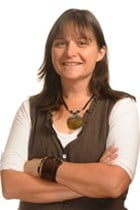Salmon are sold to us as a delicious, healthy and natural food - the bounty of the sea. This may conjure up visions of rugged, foggy fjords and robust Norwegian fishermen hauling nets of these noble silver beasts into their boats. This is, however, not usually the case.
In fact the salmon you eat has probably been raised using a method commonly known as salmon ranching - and these fish are far removed from their wild ancestors.
Wild salmon are truly impressive creatures that cover a lot of territory in their lives. They undertake massive ocean migrations before making the dramatic upstream river journeys for which they are famous, returning to their very place of birth - their natal streams - to start the next generation.
Salmon between your chopsticks
This, for the most part, is not the romantic side to the salmon between your chopsticks. The salmon you eat were probably raised in floating net pens - cages suspended in nearshore areas and stocked at high densities.
This allows the copious wastes produced to be carried away in ocean currents, free of charge. These farmed salmon are fed processed food composed largely of other fish caught in industrial fisheries and converted to pellets, but also include pigments to achieve the desired flesh colour for the target market.
Wild salmon are rarely sold in South Africa. You will recognise them by their high prices (usually three to four times the price of farmed salmon) and the word "wild" will be prominently displayed across the front of the package - it's worth a lot of money. But before you start your quest for the more expensive item, remember that fish is the most commonly faked product in supermarkets.
Could you tell the difference between fillets of the many species of rockfish on the market, between Chinook salmon and Atlantic salmon, or between farmed and wild Atlantic salmon? Could the guy behind the counter tell?
Denial and finger-pointing
In South Africa you will most likely see Atlantic salmon in markets and restaurants. But there are another six species of Pacific salmon, each with distinct migrations and behaviours that have allowed them to survive for millennia in the beautiful but disaster-prone landscapes of the Pacific Rim.
While they are well-adapted to survive floods, volcanoes and lahars, they are not surviving the commercial activities of modern humans. In the last 150 years, wild salmon have been reduced to perhaps 7% of their original numbers (although this estimate varies considerably depending on your location and your politics).
The timber industry, agriculture, hydropower dams, industrial pollution and fisheries have been variously blamed for the loss of this resource, resulting in much heated denial and finger-pointing amongst these groups. But, ultimately we are the market in a market-driven economy and we can also exert our market influence for the improvement of fishery and agriculture practices.

























